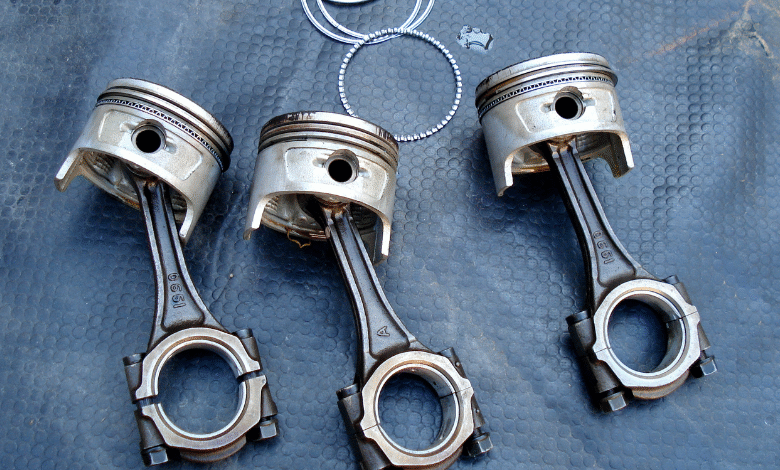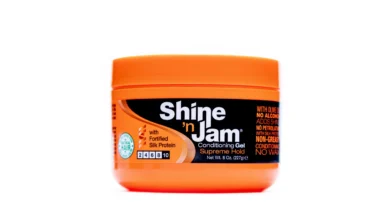Understanding the Volvo b230 5.3 pistons: A Comprehensive Guide for Performance Enthusiasts

The Volvo B230 engine, a stalwart of the Swedish automaker’s lineup, has long been a favorite among automotive enthusiasts for its robust design and potential for significant performance upgrades. Introduced in the 1980s, the B230 is a 2.3-liter inline-four engine that powered models like the Volvo 740 and 940. Its durability and versatility make it an ideal candidate for tuning, particularly for those aiming to extract high horsepower figures through turbocharging and other modifications. One critical component in such builds is the piston, and the term “5.3 pistons” often surfaces in discussions about performance upgrades for the B230, particularly in the context of Wiseco’s forged piston offerings with specific bore sizes, such as 96.5mm or 97mm, designed for stroker cranks or high-boost applications.
This article delves into the intricacies of the B230 engine, explores the role of 5.3 pistons (referring to Wiseco’s forged pistons for the B230, often associated with a 96.5mm bore or similar specifications), and provides a detailed guide for enthusiasts looking to rebuild or upgrade their engines for high-performance applications. We’ll cover the technical specifications, benefits and challenges of forged pistons, tuning considerations, and practical advice for achieving reliable power outputs in the 600-700 horsepower range. Whether you’re a seasoned Volvo tuner or a newcomer to the redblock scene, this article aims to equip you with the knowledge to make informed decisions about your B230 build.
The Volvo B230 Engine: A Brief Overview
History and Design
The B230 is part of Volvo’s “redblock” family, a series of inline-four engines known for their cast-iron blocks and exceptional durability. Introduced in 1983, the B230 powered various Volvo models, including the 740, 760, 940, and 960, in both naturally aspirated (B230F) and turbocharged (B230FT, B230ET, B230GT) configurations. The engine’s design features a single overhead cam (SOHC), eight valves, and a displacement of 2,316cc in its standard form, achieved with a 96mm bore and an 80mm stroke.
Key specifications of the stock B230 include:
- Engine Code: B230 (variants include B230F, B230FT, B230ET, B230GT)
- Displacement: 2,316cc (2.3 liters)
- Bore: 96.00mm
- Stroke: 80.00mm
- Compression Ratio: 8.7:1 (turbo variants, varies for NA)
- Block Height: 231.50mm
- Head CC: 54.40cc
- Head Gasket Thickness: 1.20mm
- Connecting Rod Length: 152.00mm
The B230’s robust construction, particularly its cast-iron block and forged crankshaft in some variants, makes it a prime candidate for high-performance builds. Enthusiasts often target power outputs exceeding 500 horsepower, with some Swedish tuners reportedly achieving over 700 horsepower using stock pistons, though with careful tuning and supporting modifications.
Why Upgrade the Pistons?
While the stock Mahle pistons in the B230 are renowned for their quality and ability to handle significant power (with some anecdotal claims of withstanding over 500 horsepower), they have limitations under extreme conditions, such as high boost levels from large turbochargers like the Holset HX52. The stock pistons, typically made from a high-silicon aluminum alloy, are designed for durability in stock or mildly tuned applications but may not withstand prolonged exposure to the thermal and mechanical stresses of high-performance builds. This is where forged pistons, such as Wiseco’s 5.3 pistons, come into play.
Forged pistons offer several advantages:
- Strength: Made from 2618 aluminum, forged pistons provide superior tensile strength compared to cast pistons, making them ideal for high-boost applications.
- Thermal Management: Forged pistons can handle higher combustion temperatures, reducing the risk of piston failure under extreme conditions.
- Customizability: Wiseco’s 5.3 pistons (e.g., WKE266M965, WKE206M97) are available in various bore sizes (96.25mm, 96.5mm, 97mm) and compression heights, allowing tuners to adjust compression ratios and accommodate stroker cranks for increased displacement.
However, forged pistons also introduce challenges, such as increased thermal expansion requiring precise clearance management and potential oil control issues when cold. These trade-offs necessitate careful consideration during the build process.
The Role of 5.3 Pistons in B230 Performance Builds
What Are “5.3 Pistons”?
The term “5.3 pistons” in the context of the B230 likely refers to Wiseco’s forged piston sets designed for the Volvo 740/940 B230 engine, particularly those with a 96.5mm or 97mm bore, often used with an 86mm stroker crank to increase displacement to approximately 2.5 liters. The “5.3” designation may stem from a specific Wiseco part number (e.g., WKE266M965) or a colloquial reference within the Volvo tuning community to these high-performance pistons. For clarity, this article assumes “5.3 pistons” refers to Wiseco’s forged pistons with a 96.5mm bore (WKE266M965) or 97mm bore (WKE266M97), as these are commonly discussed in performance forums and supplier catalogs.
Key specifications for Wiseco’s B230 pistons (WKE266M965, 96.5mm bore):
- Bore: 96.50mm (3.799 inches)
- Compression Height: 36.60mm
- Dome/Dish Volume: -20.2cc
- Deck Clearance: 0.10mm
- Compression Ratio: 8.6:1
- Piston Pin: 23mm
- Piston Rings: 9650XX
- Weight: 542 grams
- Notes: Includes pistons, rings, and pins for all cylinders
For the 97mm bore variant (WKE266M97):
- Bore: 97.00mm
- Compression Height: 36.60mm
- Dome/Dish Volume: -20.2cc
- Deck Clearance: 0.10mm
- Compression Ratio: 8.6:1
- Piston Rings: 3819HX
- Notes: Designed for stroker crank (86mm), increasing displacement to approximately 2.5 liters
These pistons are part of Wiseco’s Professional Series, engineered for high-performance applications with features like ArmorGlide® skirt coating for reduced friction and improved seizure resistance.
Benefits of 5.3 Pistons in High-Boost Applications
For enthusiasts aiming for 600-700 horsepower, as discussed in Volvo forums, the Wiseco 5.3 pistons offer several advantages:
- Durability Under High Boost: The 2618 aluminum alloy can withstand the extreme pressures and temperatures generated by large turbochargers like the Holset HX52, which is capable of supporting 600-700 horsepower.
- Lower Compression Ratios: The -20.2cc dish volume reduces the compression ratio to 8.6:1, ideal for turbocharged applications where lower compression helps manage detonation under high boost.
- Compatibility with Stroker Cranks: The 86mm stroker crank increases displacement, enhancing torque and power potential, and Wiseco’s pistons are designed to work seamlessly with this modification.
- Premium Components: The inclusion of high-quality piston rings and 23mm pins ensures reliability and proper sealing under demanding conditions.
Challenges and Considerations
While forged pistons are a significant upgrade, they come with challenges:
- Thermal Expansion: Forged pistons expand more than stock cast pistons, requiring precise piston-to-wall clearances (typically 0.003-0.004 inches) to prevent scuffing or seizure. This necessitates meticulous machining and measurement during engine assembly.
- Oil Control: Larger clearances can lead to increased oil consumption when the engine is cold, requiring careful warm-up procedures.
- Cost: Wiseco piston sets, often paired with H-beam connecting rods, can cost upwards of $500-$1,000, a significant investment compared to retaining stock pistons.
- Tuning Sensitivity: As forum discussions emphasize, even forged pistons can fail with poor tuning. Proper ignition timing, fuel delivery, and boost control are critical to prevent detonation and ensure longevity.
Building a High-Performance B230 with 5.3 Pistons
Engine Preparation and Assembly
Building a B230 engine for 600-700 horsepower requires more than just swapping pistons. Here’s a step-by-step guide to preparing the engine:
- Block Machining:
- Boring: The stock 96mm bore must be machined to 96.5mm or 97mm to accommodate Wiseco pistons. Ensure the machine shop maintains precise tolerances (e.g., 0.0035-inch piston-to-wall clearance).
- Honing: Use a torque plate during honing to simulate cylinder head clamping forces, ensuring roundness and proper ring sealing.
- Deck Surface: Verify the block deck is flat to prevent head gasket failures under high boost.
- Crankshaft and Connecting Rods:
- Stroker Crank: An 86mm stroker crank increases displacement to approximately 2.5 liters, enhancing torque. Ensure the crankshaft is balanced to handle high RPMs.
- H-Beam Rods: Upgrade to H-beam connecting rods (e.g., Wiseco’s kit with WKE206M965) for strength under high power. Later B230 models had weaker 9mm rods, while earlier ones used 13mm rods, neither of which are ideal for 600+ horsepower.
- Bearings: Use high-quality main and rod bearings rated for high-performance applications.
- Cylinder Head:
- 16v vs. 8v: The forum user mentioned a 16-valve head, which offers better flow for high-power builds. Porting and polishing can further enhance performance.
- Valvetrain: Upgrade to stronger valve springs and retainers to handle high boost and RPMs. Consider titanium components for reduced weight.
- Camshaft: Select a performance cam with moderate lift (e.g., <0.700 inches) and duration (e.g., <290 degrees) to balance power and drivability.
- Piston Installation:
- Ring Gaps: Carefully measure and set piston ring gaps to account for thermal expansion. Wiseco provides specific recommendations (e.g., 0.0045-0.0055 inches per inch of bore for top rings in turbo applications).
- Pin Fitment: Ensure the 23mm piston pins are properly fitted and lubricated.
- Skirt Coating: Wiseco’s ArmorGlide® coating reduces wear, but proper break-in procedures are essential to seat the rings.
- Turbo and Fuel System:
- Turbocharger: The Holset HX52 with an 11cm housing is a popular choice for 600-700 horsepower builds due to its high flow and torque characteristics.
- Fuel System: Upgrade to high-flow injectors (e.g., 1000cc/min) and a 12.5-13 GPM fuel pump to support the increased fuel demand.
- Engine Management: Use a standalone ECU (e.g., AEM Infinity, Haltech) for precise control of ignition timing, fueling, and boost. Proper tuning is critical to prevent piston or rod failure.
Tuning for Reliability
As emphasized in forum discussions, tuning is the linchpin of a successful high-performance B230 build. Key considerations include:
- Ignition Timing: Retard timing under high boost to prevent detonation. Start with conservative settings (e.g., 15-20 degrees BTDC at peak boost) and adjust based on dyno testing.
- Air-Fuel Ratio: Target an AFR of 11.5:1 to 12:1 under boost for safety and power.
- Boost Control: Use a boost controller to gradually introduce boost, avoiding spikes that could stress pistons or rods. The HX52’s capability for 6-700 horsepower requires careful management, with boost levels typically in the 25-30 psi range for such power outputs.
- Monitoring: Install wideband O2 sensors, EGT gauges, and knock sensors to monitor engine health in real-time.
Supporting Modifications
To complement the 5.3 pistons and ensure reliability at high power levels:
- Transmission: The Holset HX52’s torque output necessitates a reinforced transmission, such as a Getrag 5-speed manual or a built automatic.
- Cooling System: Upgrade to a high-capacity radiator and oil cooler to manage heat from high boost and sustained track use.
- Exhaust System: Use a free-flowing exhaust with a low-restriction muffler to maximize turbo spool and power.
- Chassis Bracing: For street-legal “sleeper” builds, reinforce the chassis with components like Yoshifab’s lower chassis braces or control arm box plates to handle increased torque.
Practical Insights from the Volvo Community
Forum Discussions and Real-World Experiences
Volvo enthusiasts on forums like the Volvo Owners Club have extensively discussed the merits of stock versus forged pistons for B230 builds. A user rebuilding a 1997 B230FT with a 16-valve head and Holset HX52 sought advice on forged pistons, citing Wiseco as a popular choice. The community response highlighted several key points:
- Stock Piston Durability: Some users claimed stock Mahle pistons could handle over 500 horsepower, with anecdotal reports from Sweden of 700+ horsepower on stock pistons. However, concerns about long-term reliability under high boost led the user to consider forged options.
- Tuning Importance: Multiple users emphasized that poor tuning could destroy even forged pistons, underscoring the need for precise ignition timing and fueling.
- Rod Upgrades: The consensus was that while stock pistons might suffice, the connecting rods (especially 9mm rods in later models) are a weak point, necessitating H-beam upgrades for 600+ horsepower builds.
One notable example cited was a Swedish tuner named Jens, who reportedly achieved 683-700 horsepower using modified stock pistons with turned-down crowns to lower compression ratios, paired with extensive supporting mods. However, the user expressed skepticism about the long-term reliability of stock pistons under such conditions, preferring the peace of mind offered by forged pistons like Wiseco’s.
Supplier Insights
Suppliers like Yoshifab and Speeding Parts offer Wiseco piston kits for the B230, often bundled with H-beam connecting rods for comprehensive performance upgrades. Yoshifab’s B230 performance piston set ($103.98) and long rod/piston set ($499.99) cater to different budgets and performance goals. Speeding Parts lists Wiseco kits with 96.25mm, 96.5mm, and 97mm bores, with detailed specifications for stroker applications, indicating their popularity among tuners.
Comparing Stock vs. Forged Pistons
Stock Mahle Pistons
Pros:
- Cost-Effective: No additional cost for stock rebuilds, saving $600-$1,000 compared to forged piston kits.
- Proven Durability: Anecdotal evidence suggests stock pistons can handle 500-700 horsepower with proper tuning, particularly in Sweden’s “special air” (likely referring to high-octane fuels or optimal tuning conditions).
- OEM Fitment: Designed for the B230, requiring no additional machining beyond standard rebuild tolerances.
Cons:
- Limited Longevity: High boost and power levels may stress stock pistons, leading to potential failure over time.
- Compression Ratio: Stock pistons may not offer the flexibility to lower compression ratios for extreme turbo builds.
- Material Limitations: Cast aluminum is less resistant to thermal and mechanical stress than forged 2618 aluminum.
Wiseco 5.3 Forged Pistons
Pros:
- High Strength: 2618 aluminum and ArmorGlide® coating ensure durability under high boost and temperatures.
- Customizable: Available in multiple bore sizes and designed for stroker cranks, allowing tailored compression ratios and displacement.
- Reliability: Better suited for sustained high-power applications, offering peace of mind for 600-700 horsepower builds.
Cons:
- Cost: Significant investment, especially when paired with H-beam rods.
- Clearance Issues: Requires precise machining and attention to ring gaps to manage thermal expansion.
- Complexity: Installation and tuning are more involved, requiring experienced mechanics or tuners.
Case Study: A 600-Horsepower B230 Build
To illustrate the application of 5.3 pistons, consider a hypothetical build based on the forum user’s specifications:
- Engine: 1997 B230FT, bored to 96.5mm
- Pistons: Wiseco WKE266M965 (96.5mm bore, 8.6:1 compression ratio)
- Crankshaft: 86mm stroker crank, increasing displacement to ~2.5 liters
- Connecting Rods: H-beam rods (Wiseco kit)
- Turbo: Holset HX52 with 11cm housing
- Head: Ported 16-valve head with performance valve springs
- ECU: Standalone AEM Infinity
- Fuel System: 1000cc/min injectors, 13 GPM fuel pump
- Transmission: Reinforced Getrag 5-speed manual
- Goal: 600-700 horsepower, street-legal “sleeper” for occasional drag strip use
Build Process:
- The block is machined to 96.5mm, honed with a torque plate, and decked for flatness.
- The 86mm stroker crank and H-beam rods are installed, balanced, and paired with Wiseco pistons. Ring gaps are set to Wiseco’s specifications for turbo applications.
- The 16-valve head is ported, fitted with upgraded valve springs, and paired with a performance cam (e.g., 0.650-inch lift, 280-degree duration).
- The HX52 turbo is installed with a high-flow exhaust manifold and 3-inch exhaust system.
- The AEM Infinity ECU is tuned for 25-30 psi boost, with conservative ignition timing (18 degrees BTDC at peak boost) and an AFR of 11.8:1.
- Chassis upgrades include Yoshifab lower braces and control arm plates for stability.
Results:
- Power Output: Dyno testing yields 620 horsepower at 28 psi, with 580 lb-ft of torque, thanks to the Holset’s torque characteristics and increased displacement.
- Reliability: The Wiseco pistons and H-beam rods handle the stress, with proper warm-up procedures mitigating oil control issues.
- Drivability: The car remains street-legal, with a sleeper aesthetic but formidable drag strip performance.
This build demonstrates the potential of Wiseco’s 5.3 pistons in achieving high power while maintaining reliability, provided tuning and assembly are meticulous.
Tips for Writing a 5,000-Word Article on Technical Topics
For those inspired to write their own 5,000-word article on a technical topic like the B230 and 5.3 pistons, consider the following tips, adapted from general essay-writing advice:
- Outline First: Create a detailed outline with sections (e.g., Introduction, Engine Overview, Piston Details, Build Guide, Community Insights, Comparison, Case Study, Conclusion). Allocate ~500 words for the introduction and conclusion, leaving ~4,000 words for the main body (20-40 paragraphs at 100-200 words each).
- Use Subheadings: Break the article into digestible sections with informative subheadings, such as “Why Upgrade the Pistons?” or “Tuning for Reliability.”
- Incorporate Citations: Use 20-30 references for a 5,000-word article, citing each source 2-3 times. Ensure sources are balanced and not overly reliant on a single reference.
- Sequential Structure: Organize content logically, progressing from general (B230 overview) to specific (5.3 piston specs) to practical (build guide and case study).
- Engage the Reader: Start with a hook (e.g., the allure of a 700-horsepower Volvo sleeper) and maintain a clear, enthusiastic tone to keep readers invested.
Conclusion
The Volvo B230 engine, with its robust design and tuning potential, remains a favorite among performance enthusiasts seeking to build high-horsepower vehicles. Wiseco’s 5.3 pistons, likely referring to their forged piston sets for the B230 (e.g., 96.5mm or 97mm bore), are a critical upgrade for those targeting 600-700 horsepower with turbochargers like the Holset HX52. These pistons offer unmatched strength and flexibility, allowing tuners to lower compression ratios and accommodate stroker cranks for increased displacement. However, their benefits come with challenges, including higher costs, precise machining requirements, and the need for meticulous tuning to prevent failure.
By combining Wiseco’s 5.3 pistons with H-beam connecting rods, a stroker crank, a ported 16-valve head, and a robust fuel and engine management system, enthusiasts can build a reliable, street-legal B230 capable of dominating the drag strip while maintaining the understated charm of a Volvo sleeper. Community insights from forums like the Volvo Owners Club underscore the importance of tuning and supporting modifications, with some advocating for stock pistons’ durability but acknowledging forged pistons’ superiority for extreme builds.
For those embarking on a B230 performance project, the key is balance: invest in quality components like Wiseco’s 5.3 pistons, but prioritize proper assembly, tuning, and maintenance to ensure longevity. With careful planning and execution, the B230 can transform from a humble family car engine into a powerhouse capable of rivaling modern performance vehicles, proving that Volvo’s redblock legacy is as vibrant as ever.



